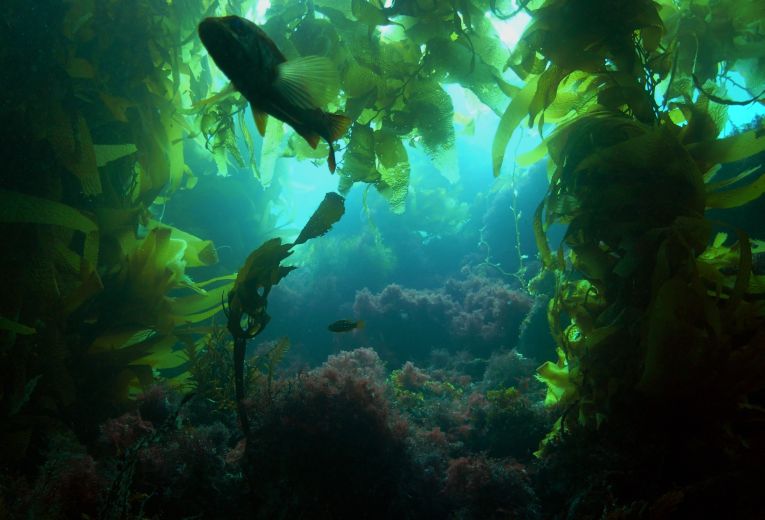When we talk of forests being lost, thoughts turn to enormous expanses of tropical jungle spreading to the horizon, or the coniferous forests of the north. The kelps and other algae are just as significant in their biome, however, if not so widespread. The NW of Europe, west-coast America and Australia are the habitats used mainly by these thick and deep forests of the most complex of the Algae. Now it seems a possibility that we can go green with our urban coastlines and re-establish these complex ecosystems.
To achieve a return to prehistoric levels of algal dominance might seem a faint hope, but this research in the south of Australia sheds light on what can be done in coastal algal ecology where human interference is very recent. Transplants of individual fucoid (brown) algae were made in previously polluted parts of Sydney's Bays. Only in a few places on earth can we have complete records of the pristine habitat, as it was.
Thanks to the care taken since Captain Cook first set foot, we know quite a lot about Australia's east and south. Phyllospora comosa is the cray weed, about 3m tall in New South Wales, but found as far away as New Zealand. In its niche, it resembles the giant 45m Macrocystis pyrifera kelp forest algae and the fucoid kelp forests formed from 5m species such as Saccharina latissima , sea belt, in the rocky NW bays of Europe.
One site of transplants at Long Bay, within metropolitan Sydney, was very satisfactory for the Phyllospora . The greatest densities were achieved where the plant had reproduced and grown within the restored patch. 70% of the transplants survived compared to only 40% at Cape Banks, with a time period for the experiment of up to 5 months. The plants were all sampled for detailed measurement afterwards.
The obvious conclusions are that Sydney's sewage problems may have destroyed the forests in these locations but much of the forest could now be returned to its former glory, allowing fish of many species, and invertebrates to greatly enhance the biodiversity. Degradation of temperate coasts by anthropogenic effects is so common that we forget that this is relatively recent in the American experience and in Australasia.
The 1970s and 1980s saw the loss of these algae, but there have been very significant improvements in water quality since then, with tourism being encouraged by the water quality. Individual plants here survived better than in natural communities in some cases, within a time-scale of 18 months. They were the victims of their own success when animals began eating them up, which bodes very well in one way at least! With more ecological studies, the replacement of Sydney's underwater forests could soon be completed, along perhaps with hope that fish populations everywhere will benefit from rehabilitating these magnificent algal forests worldwide.
Ezequiel M. Marzinelli, Adriana Verges, Melinda A. Coleman and Peter D. Steinberg of the Sydney Institute of Marine Sciences and the Australian Department of Primary Industries in New South Wales published their paper in PLoS ONE.










